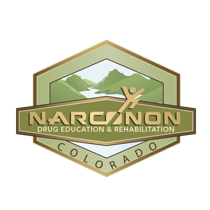The Three Waves of the United States Opioid Overdose Epidemic

Some people are still in doubt that an addiction problem exists on a national level. However, when looking at the statistics the numbers are grim. The more a person learns about what is going on in the United States the harder it becomes to deny the evidence that there is indeed a drug problem and that it has been evolving for some time now.
- Between the years of 1999 and 2017 more than 700,000 people in the United States have died from a drug overdose.
- The number of people that died from some form of opioid in 2017 was six times higher than that of 1999.
- 2017 marked a record high for drug overdose deaths resulting in 70,200 people dying in one year from drug overdoses.
- The substantial increase in the amounts of deaths from opioid overdose has been on the rise since 1999 and in 2017, 68.7% of all drug overdose deaths involved some form of an opioid.
How Did We Get to This Point?
Going back to the 1990’s we can see that the overprescribing of opioid painkillers—in particular OxyContin—set the stage for an addiction epidemic the likes of which the world has never seen.
It was at this time that Purdue Pharma began to falsely advertise its new prescription opioid OxyContin as non-addictive. In a highly successful marketing campaign, they were able to increase their sales of OxyContin substantially. This lead to a higher amount of people who would become addicted to prescription narcotics than ever before and sent the United States down a rabbit hole that we are still experiencing the repercussions from.
A massive increase in the amounts of deaths related to heroin began in 2010. The popularity of the drug increased its demand which resulted in the flooding of heroin into the United States as people began to seek out a cheaper and stronger high. Many people who had been cut off from their prescriptions turned to the streets for an alternative means of pain management or as a way to sustain their addiction.
The introduction of the synthetic opioids fentanyl and carfentanil into the black market in 2013 marked the beginning of the deadliest chapter which we are still experiencing. Both drugs are so powerful that only a small amount can result in a lethal dose.
Because they are cheaper to make than other drugs they are both being used as cutting agents in anything from heroin to cocaine. Due to the high demand for opioid pills illegally produced counterfeit pills containing these dangerous substances have also made their way onto the scene and so have further escalated the death count.
Simply put, the overprescribing of addictive prescription drugs lead to high rates of abuse and misuse which has resulted in widespread addiction. In 2017, the United States Department of Health and Human Services (HHS) Acting Secretary Eric D. Hargan finally declared the Opioid Epidemic to be a nationwide public health emergency and began to implement a plan to address it.
The five top priorities for the HHS regarding the Opioid Epidemic are to:
1. Improve access to prevention, treatment, and recovery support services.
2. Target the availability and distribution of overdose-reversing drugs.
3. Strengthen public health data reporting and collection.
4. Support cutting-edge research on addiction and pain.
5. Advance the practice of pain management.
In 2017 the HHS invested nearly $900 million in funding to support state and local governments in their fight against the opioid epidemic. This funding has helped to provide training for first responders, increased availability of overdose-reversing drugs such as Narcan and increased support for addiction treatment and recovery services.
As a nation, we are finally starting to head in the right direction by addressing this nationally catastrophic problem. However, we still have a long way to go.
Resources:
- https://www.hhs.gov/opioids/
- https://www.hhs.gov/about/news/2017/10/26/hhs-acting-secretary-declares-public-health-emergency-address-national-opioid-crisis.html
- https://www.hhs.gov/about/news/2017/10/26/hhs-acting-secretary-declares-public-health-emergency-address-national-opioid-crisis.html
- https://www.cdc.gov/drugoverdose/epidemic/index.html
- https://www.hhs.gov/sites/default/files/opioid%20PHE%20Declaration-no-sig.pdf
- https://www.washingtonpost.com/news/business/wp/2018/09/08/the-man-who-made-billions-of-dollars-from-oxycontin-is-pushing-a-drug-to-wean-addicts-off-opioids/


